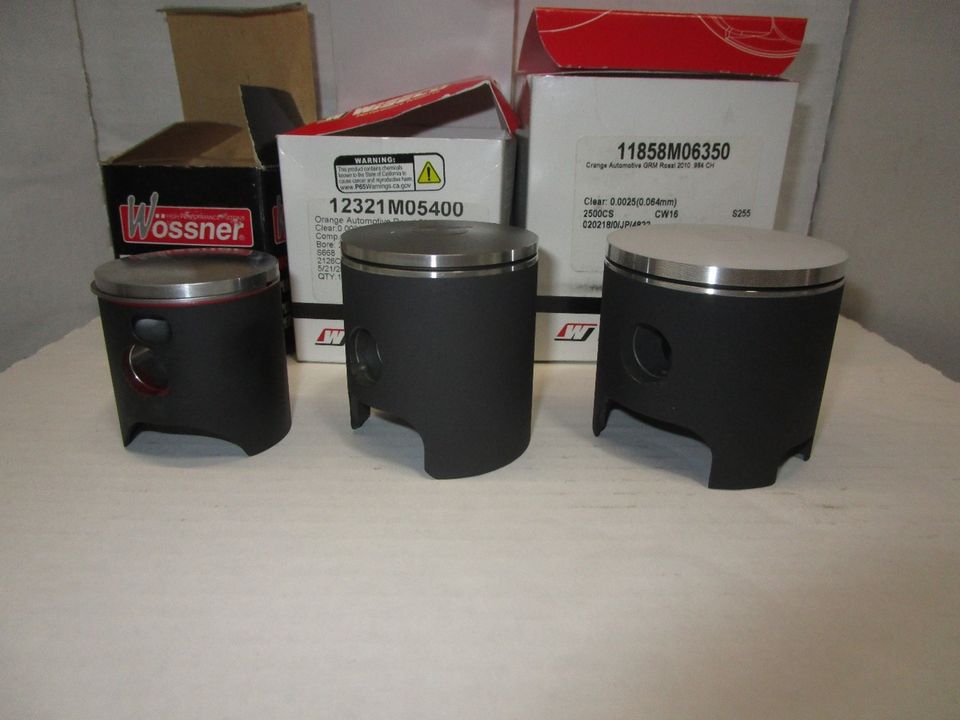Coating Pistons. People do it for different reasons. What are you trying to achieve? For me as a builder I have very specific needs or wants. I want to fit the piston to the bore in different clearance from top to bottom. My goal is to decrease the clearance just under the ring to the bore. The closer I can make that the better it runs. Here’s why
Tighter clearance there, transfers heat better to the bore. Piston actually at less risk of sticking
Tighter clearance there will limit the amount of rock on the wrist pin which can cause less piston skirt collapse. This also allows the ring to seal better when not rocking in the bore.
Tighter clearance there will seal better, primary and secondary compression
The coating is a slippery non-skid surface so it can fit tighter clearance and still protect the piston
The coating is designed to wear to the natural fit of what the bore requires and no more. This adds a great deal of life to the piston duty cycle. I some cases you can run the piston two to three times longer without loss of performance.
Most OEM coating are break-in coatings and wear away in a small amount of time. They just want to get through break-in while the piston is bending itself to fit the bore.
The Line 2 Line coating does not wear away. I like to add.003-.004 in thickness of coating. Then break the engine in carefully to wear the coating into matching to bore with minimal clearance. This I have proven on the dyno to gain 3 hp on a 2 cylinder 50 hp engine.
We did a A-B-A test. New prepared engine with naked pistons. Break-in and tune stable with repeatable data. Disassembled, installed new coated pistons. Used same rings as they were seated to the bore. Went through a break-in program to get the coating fit happy. Tuned stable and found gain of 3.5 hp. Went back to a naked piston, again with the same ring and we lost 3.75 hp So, A-B-A test showed us with read data performance differences.
Carful break-in of the coating with heavy fits is critical but every bit worth the time and effort.
Every engine built at WPT will have this coat where legal and some times where it is not.
You can race a coated piston all season, then remove and measure it. It will still be bigger than a new stock piston. So why did you have all that clearance to begin with?
I had a new race engine from Italy, I coated the piston right away. Ran it a week and disassembled. The coating had worn through just below the ring. This means there was no room for the coating. It wore to fit the bore. I honed the bore .0012’ larger, recoated the piston and won races with this combination.
Better heat transfer
Better sealing
Better piston life as less skirt collapse.
Lower friction and better scuff resistance
All Total Better performance
Line2Line coating is like no other. Standard equipment in our engines




